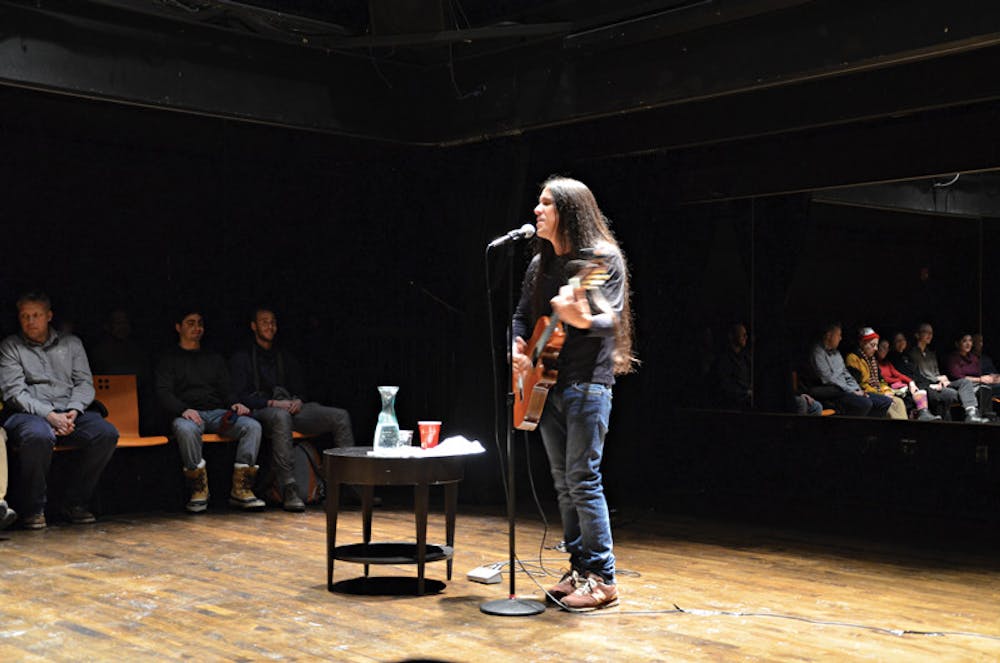Standing at a podium in the McCormack Family Theater, Orlando Luis Pardo Lazo conjured criticism of his home country in flowing Spanish interspersed with English translations for a small gathering of students, faculty members and writers. Reading from “Cuba in Splinters,” a recently published collection of short stories about Cuba that includes one of his own, Pardo Lazo expressed the frustration of a post-revolutionary generation.
In the opening paragraph of Pardo Lazo’s own story “The Man, the Wolf and the New Woods,” the protagonist proclaims: “I didn’t want to go back to Cuba. I didn’t give a damn about what became of that imitation of a country. I didn’t want to hear another word about it, not even in emails. No Cuba.”
Pardo Lazo was one of a few Cuban writers who helped organize the series of events Feb. 4 and Feb. 5 entitled “Cuba in Splinters” and sponsored by the Literary Arts department. Through presentations, panel discussions and a concert by Cuban singer Boris Larramendi, the events provoked discussions about Cuban literature, music and culture over the two days.
The series’ activities stemmed from a “Cuba in Splinters” anthology, published in June 2014, Pardo Lazo said. Comprising 11 stories personally picked by Pardo Lazo, the book represents the generation of writers with whom Pardo Lazo identifies most, he said. These writers, largely unrecognized in the U.S., have become known as Generation Year Zero.. The name refers to the movement’s birth in the early 2000s, Pardo Lazo added. Many authors of Generation Year Zero came from primarily scientific fields and did not have formal literary training, he said. Pardo Lazo himself was a biochemist, and such background is vital to his selection of the writers for “Cuba in Splinters.”
“This is not an anthology of comprehensive Cuban literature,” Pardo Lazo said, adding that the writers “share similar points of view, the feeling of emptiness, the feeling of change of an era into something that maybe has no meaning, like a lost paradise, like a transitional stage from the Revolution to post-revolution, post-communist, post-nothing.”
The stories in “Cuba in Splinters” are neither patriotic celebrations of Cuban cultural establishments nor ingrained personal connections to the nation. Instead, they are fraught with everlasting frustrations and agonies in response to the nation’s stagnant yet paradoxically volatile state in the midst of communism and revolution.
The selection of stories adapts distinctive narratives towards such grievances. In “Fefita and the Berlin Wall,” Jorge Alberto Aguiar Díaz depicted the rise and fall of a love affair, which mirrors the shifts of the Cuban society through documentary-style narrative.
“That Zombie Belongs to Fidel,” by Erick J. Mota, traces an absurd tale of zombies flooding the streets of Havana, exploring freedom in the face of revolution.
The story reflects the irrationality that tore through the city post-revolution. “That’s why they say Fidel is ill. He can’t give speeches that last more than an hour because he’s a zombie,” the story reads.
Panel discussions aimed to identify Cuban literature and trends in contemporary Cuban narratives, evoking reflections from multiple aspects. “The stories all connected with the idea that Cuba — from something that’s together in a more monolithic way — is being fragmented to the speed of the light,” Pardo Lazo said. “This is why Cuba is in splinters. It is piercing and hurting.”





